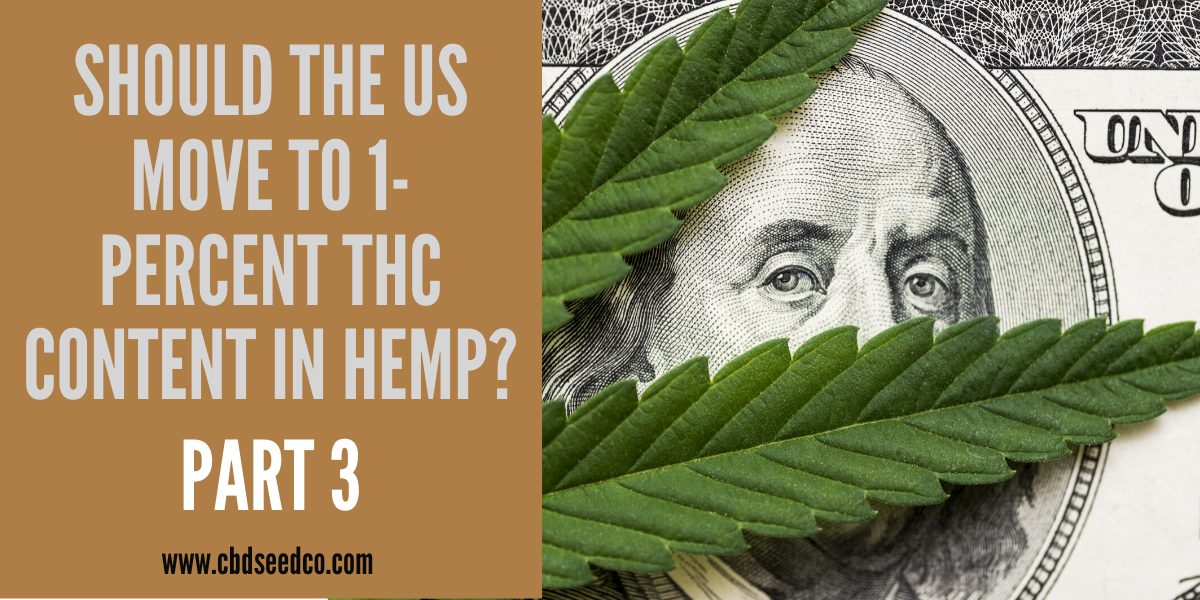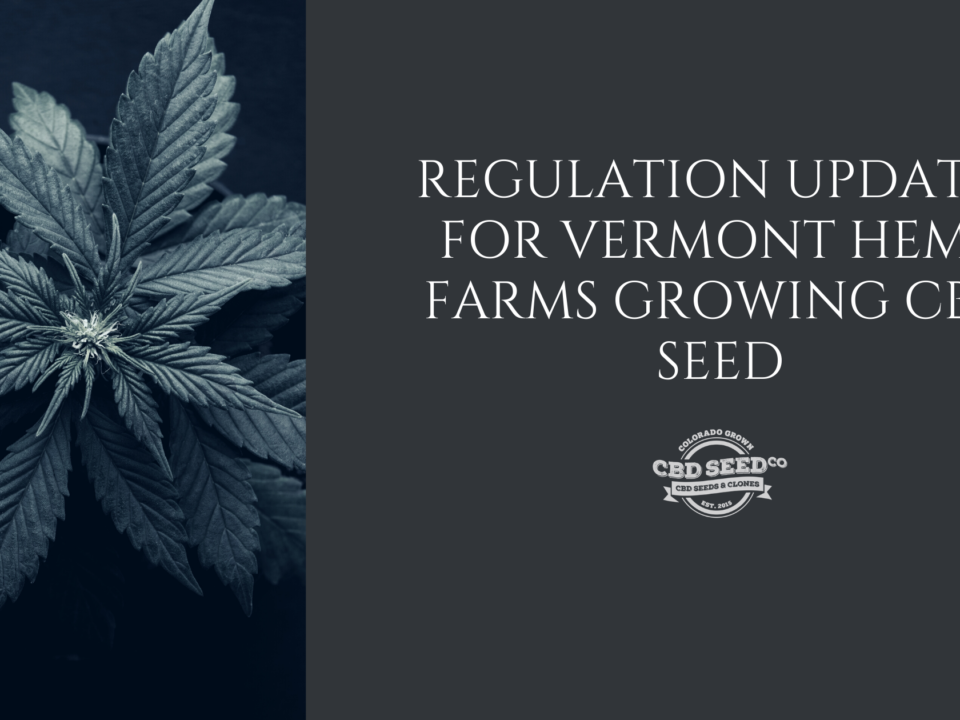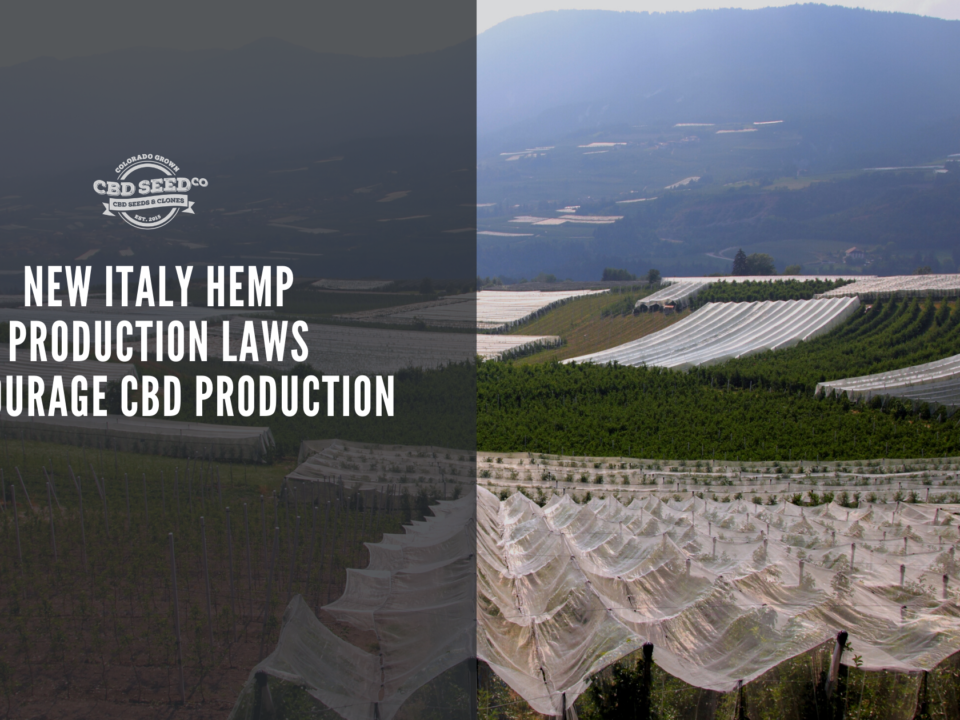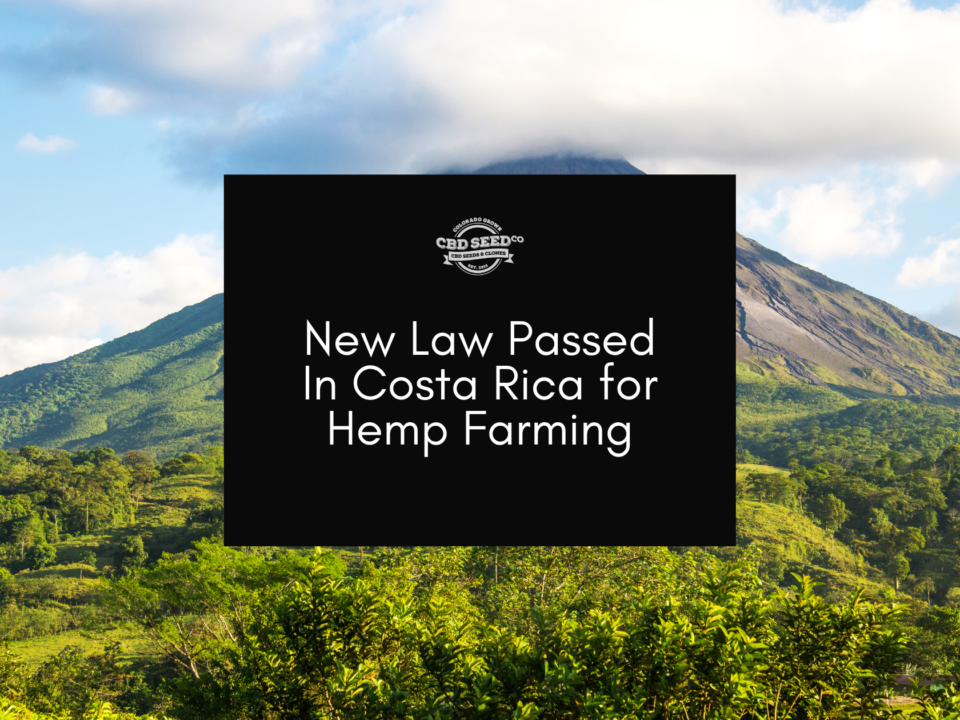Should The US Move To 1% THC Content in Hemp?: Part 3

Should The US Move To 1% THC Content in Hemp?: Part 2
February 28, 2020
WHAT DO YOU NEED TO START GROWING HIGH CBD HEMP?
March 5, 2020There are some good reasons for the US to consider changing its hemp THC law to 1% sooner rather than later. As you will see, these all have to do with making things easier for US farmers.
Reasons The US Should Switch to 1% THC Industrial Hemp
As hemp businessman Richard Rose stated:
“The future of hemp is 1% max THC if farmers are going to be able to compete in a global market,”
Some people are working towards making the 1% THC law for industrial hemp a reality–albeit not a ton. The reason this is not a bigger push right now is that states are just now scrambling to get up to speed with a .3% hemp regulations. However, the US may be better off to consider it fast. Some organizations, like the U.S. Hemp Roundtable, understand this. They are working to raise the THC limit because they argue that .3% make it too difficult for US farmers to compete. They very well could be right. Hemp plants routinely test above .3% during the growing season but then the level comes down. With current regulations–this could mean the destruction of millions of dollars in crops. A definite setback for hemp farmers in the US trying to compete worldwide. Furthermore, the seed laws and potential seed dealers are not clearly defined as of yet–meaning hemp farmers are facing a massive hurdle simply trying to get seeds. Already with delayed interim hemp rule by the Federal government in 2019 has delayed full hemp production in at least 6 states; these states opted to stay with research programs in 2020 instead of scrambling to comply. Thousands of farmers may miss out on the 2020 harvest because of this. This means one more year the US will continue to fall or lag behind the world–not a great thing for our burgeoning hemp economy.
What Will The Future US Hemp Laws Be?
Nobody truly knows what the future in THC content in hemp will look like even 5 years from now–that is for sure. However, there is some speculation that CBD and THC ratios may begin to divide into “lanes”. When the FDA truly begins to test and regulate hemp-based products it could very likely be put into categories: recreational, pharmaceutical, and supplemental categories in descending order of strength and strictness. Something like this takes the .3% burden away from the farmer. This is because the .3% (or other restrictions) will be put on the final products rather than the hemp plant itself. Regardless, we will soon see hemp become a commodity and a massive amount of research on CBD efficacy and/or dangers will follow. In the meantime, since the U.S. ‘s THC limit is lower than most other countries–the US farmers and CBD farmers may have an easier time exporting–possibly a silver lining in the .3% THC law cloud.
For more information on fine CBD seeds that are guaranteed to be below .3% T, contact CBD Seed Co today!





